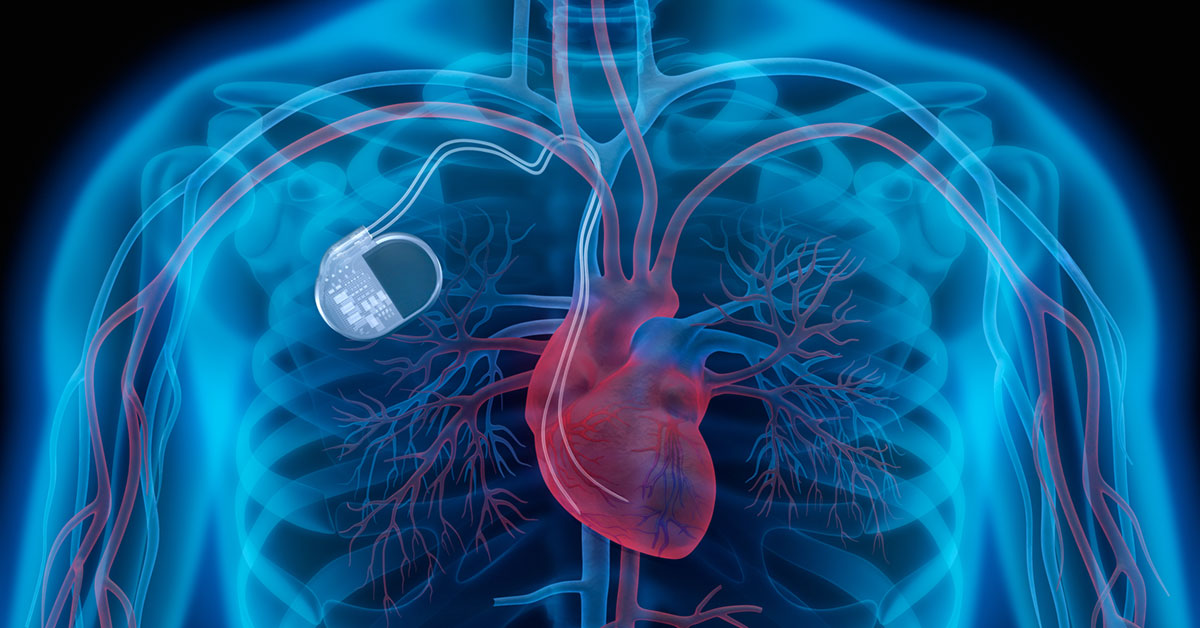Types of Implantable Cardiac Devices

Implantable cardiac devices are used to monitor and treat heart rhythm disorders. The most well-known implantable device is the pacemaker, but there are several other types of devices that may be used depending on the patient’s symptoms or diagnosis.
Pacemaker
Pacemakers work to keep the heart beating at the proper speed and are used to treat patients with many types of arrhythmias. Bradycardia, which is a slow heart rate, is often treated with a pacemaker. Other reasons for a pacemaker can include a heartbeat that pauses periodically or a weakened heart from heart failure, heart attack, or congenital heart defects. Most standard pacemakers have a lead connected to the right ventricle, or lower right chamber, of the heart to help set a consistent pace.
Implantable cardioverter defibrillator
An implantable cardioverter defibrillator, or ICD, is a device that combines pacemaker capabilities with a defibrillator. When a life-threatening ventricular tachycardia develops, the defibrillator responds and can shock the heart to try and restore a normal rhythm. Patients, most typically those with heart failure, are eligible for an ICD when they have a low ejection fraction, or EF. The EF is the percentage of blood that is pumped out of the heart with each beat. When this percentage is too low, patients are at risk for ventricular tachycardia and may need an ICD.
Biventricular pacemaker
Sometimes a pacemaker needs more than one lead to help the different chambers of the heart work together more effectively. A biventricular pacemaker has three leads, one to each of the ventricles and one to the right atria. This type of pacemaker is used mostly with patients with advanced heart failure. In these patients, the ventricles do not always beat simultaneously. The biventricular pacemaker helps them beat in sync, which results in a more efficient beat and decreased symptoms.
Cardiac loop recorder
A cardiac loop recorder is a device used to diagnose certain arrhythmias, but it does not treat them. Sometimes arrhythmias occur infrequently. Tests like an electrocardiogram (ECG) capture a short period of time during the appointment, and a Holter monitor captures rhythm over 24 to 48 hours. When an arrhythmia is suspected and the Holter monitor results are normal, sometimes a cardiac loop recorder is recommended. This device is inserted under the skin and worn for as much as 15 to 18 months. It activates either when it detects an arrhythmia or when the patient experiences symptoms and triggers the device to record. After a diagnosis is made, the device can be removed. Sometimes a pacemaker is placed as a part of treatment, while other times medication can control the arrhythmia.
These implantable cardiac devices can help diagnose, monitor, or treat a range of heart rhythm issues and other heart conditions. If you have symptoms of a heart rhythm disorder or questions about implantable cardiac devices, contact Oklahoma Heart Hospital to schedule an appointment with one of our heart rhythm specialists.
